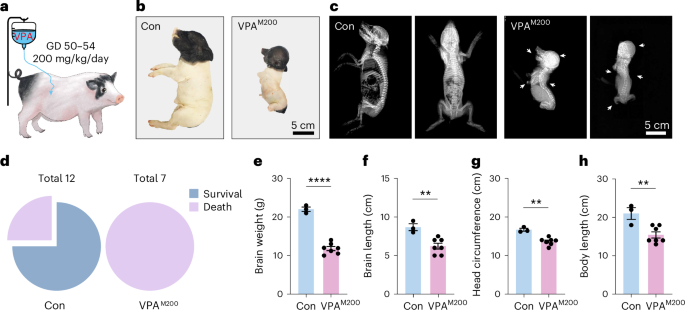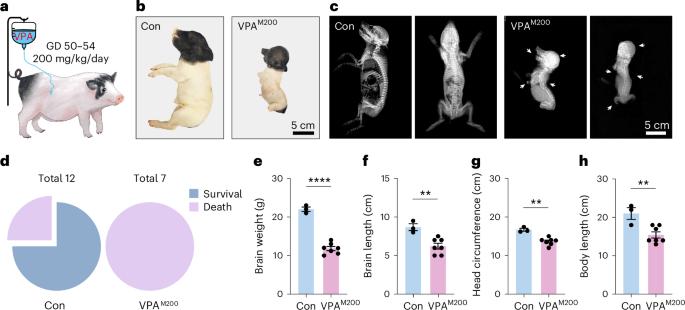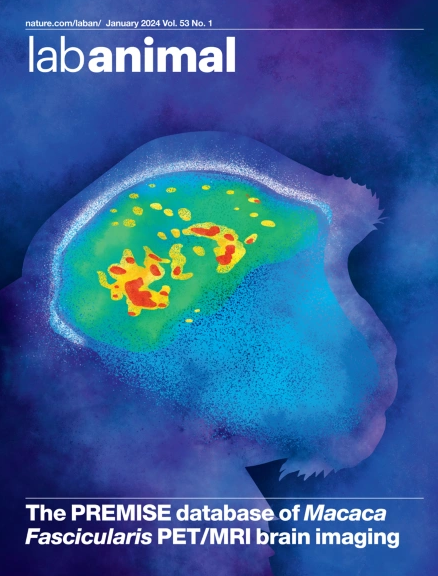Development and evaluation of an autism pig model
IF 5.9
3区 农林科学
Q1 VETERINARY SCIENCES
引用次数: 0
Abstract
Developing cost-effective and disease-relevant animal models is essential for advancing biomedical research into human disorders. Here we investigate the feasibility of a pig model for autism spectrum disorder (ASD) using embryonic exposure to valproic acid (VPA), an antiepileptic drug known to increase ASD risk. We established experimental paradigms to assess the behavioral characteristics of these pig models. Administration of VPA to Bama miniature pigs (Sus scrofa domestica) during critical embryonic stages resulted in abnormal gait, increased anxiety levels, reduced learning capabilities and altered social patterns, while largely preserving social preference of treated piglets. Notably, we detected significant neuroanatomical changes in cortical regions associated with ASD in the VPA-treated pigs, including cortical malformation, increased neuronal soma size, decreased dendritic complexity and reduced dendritic spine maturation. Transcriptome analysis of the prefrontal cortex of VPA-treated pigs further revealed substantial alterations in the expression of genes linked to ASD, especially genes of the dopamine signaling pathway, highlighting the model’s relevance and potential for shedding light on ASD’s underlying neuropathological and molecular mechanisms. These findings suggest that pig models could serve as a promising alternative to traditional rodent models and provide a more ethical substitute for the use of primates in translational research on neurodevelopmental disorders. This study describes a new pig model of autism induced by embryonic exposure to valproic acid. The pig model displays behavioral alterations, abnormal gait and increased anxiety, which recapitulate key features of autism.


自闭症猪模型的开发与评估
开发具有成本效益且与疾病相关的动物模型对于推进人类疾病的生物医学研究至关重要。在这里,我们研究了利用胚胎暴露于丙戊酸(VPA)(一种已知会增加自闭症谱系障碍风险的抗癫痫药物)来建立自闭症谱系障碍(ASD)猪模型的可行性。我们建立了实验范例来评估这些猪模型的行为特征。在巴马小型猪(Sus scrofa domestica)的关键胚胎期给予 VPA 会导致其步态异常、焦虑水平升高、学习能力下降和社交模式改变,同时在很大程度上保留了受试仔猪的社交偏好。值得注意的是,我们在经 VPA 处理的猪中检测到与 ASD 相关的皮质区域发生了显著的神经解剖学变化,包括皮质畸形、神经元体增大、树突复杂性降低和树突棘成熟度降低。对VPA处理过的猪的前额叶皮层进行的转录组分析进一步揭示了与ASD相关的基因,特别是多巴胺信号通路基因的表达发生了重大变化,这突出表明了该模型在揭示ASD的潜在神经病理学和分子机制方面的相关性和潜力。这些研究结果表明,猪模型可以替代传统的啮齿类动物模型,为神经发育障碍转化研究中灵长类动物的使用提供更合乎伦理的替代品。
本文章由计算机程序翻译,如有差异,请以英文原文为准。
求助全文
约1分钟内获得全文
求助全文
来源期刊

Lab Animal
农林科学-兽医学
CiteScore
0.60
自引率
2.90%
发文量
181
审稿时长
>36 weeks
期刊介绍:
LabAnimal is a Nature Research journal dedicated to in vivo science and technology that improves our basic understanding and use of model organisms of human health and disease. In addition to basic research, methods and technologies, LabAnimal also covers important news, business and regulatory matters that impact the development and application of model organisms for preclinical research.
LabAnimal's focus is on innovative in vivo methods, research and technology covering a wide range of model organisms. Our broad scope ensures that the work we publish reaches the widest possible audience. LabAnimal provides a rigorous and fair peer review of manuscripts, high standards for copyediting and production, and efficient publication.
 求助内容:
求助内容: 应助结果提醒方式:
应助结果提醒方式:


